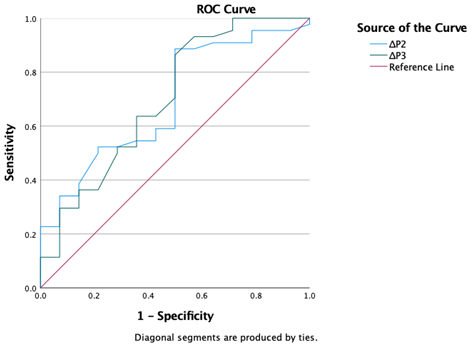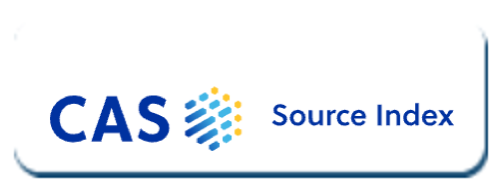The diagnostic value of alterations in potassium and phosphate levels during an oral glucose tolerance test for hyperinsulinemia
DOI:
https://doi.org/10.5281/zenodo.7671134Keywords:
Diabetes mellitus, hyperinsulinemia, oral glucose tolerance test, phosphate, potassiumAbstract
Objective: We aimed to test whether the potassium and phosphate level alterations during the OGTT test are useful to diagnose hyperinsulinemia/insulin resistance.
Materials and methods: The study comprised patients who applied at our clinic for obesity or hyperglycemia and were scheduled for an oral glucose tolerance test (OGTT) because of high HbA1c levels or impaired fasting glucose levels. During the OGTT, blood glucose, insulin, potassium and phosphate patterns were measured at 0-30-60-90 and 120 minutes. Then potassium (K) and phosphate (P) changes were calculated (ΔK and ΔP).
Results: A total of 58 patients were included in the study, 63.8% (37 patients) were female and 36.2% (21 patients) were male. Mean age: 14.35±1.83 years, 79.3% were obese. A significant difference was found in the 90 min phosphate, ΔP2, and ΔP3 values of the patients with hyperinsulinemia were compared to the patients without hyperinsulinemia (respectively; p=0.018; p=0.040; p=0.005). There was no difference between ΔK values of the patients with and without hyperinsulinemia. While potassium level decreased to 3.6 mmol/L during OGTT, phosphate level decreased to 1.8 mg/dl.
Conclusions: ΔP2 and ΔP3 can be used as additional diagnostic parameters in the diagnosis of hyperinsulinemia. Phosphate and potassium should be checked before the test, as hypokalemia and hypophosphatemia may develop, especially in patients with significant hyperinsulinemia during the OGTT.
References
Moller DE, Flier JS. Insulin resistance-mechanisms, syndromes, and implications. N Engl J Med. 1991;325(13):938-48.
Semple RK, Savage DB, Cochran EK, Gorden P, O'Rahilly S. Genetic syndromes of severe insulin resistance. Endocr Rev. 2011;32(4):498-514.
Ten S, Maclaren N. Insulin resistance syndrome in children. J Clin Endocrinol Metab. 2004;89(6):2526-39.
Conwell LS, Trost SG, Brown WJ, Batch JA. Indexes of insulin resistance and secretion in obese children and adolescents. Diabetes Care. 2004;27(2):314-9.
Gutch M, Kumar S, Razi SM, Gupta KK, Gupta A. Assessment of insülin sensitivity/resistance. Indian J Endocrinol Metab. 2015;19(1):160-4.
Atabek ME, Pirgon O. Assessment of insulin sensitivity from measurements in fasting state and during an oral glucose tolerance test in obese children. J Pediatr Endocrinol Metab. 2007;20(2):187-95.
Ngugi NN, McLigeyo SO, Kayima JK. Treatment of hyperkalaemia by altering the transcellular gradient in patients with renal failure: effect of various therapeutic approaches. East Afr Med J. 1997;74(8):503-9.
Mahajan SK, Mangla M, Kishore K. Comparison of aminophylline and insulin-dextrose infusions in acute therapy of hyperkalemia in end-stage renal disease patients. J Assoc Physicians India. 2001;49:1082-5.
Riley MS, Schade DS, Eaton RP. Effects of insulin infusion on plasma phosphate in diabetic patients. Metabolism. 1979;28(3):191-4.
Matthews DR, Hosker JP, Rudenski AS, Naylor BA, Treacher DF, Turner RC. Homeostasis model assessment: insulin resistance and beta-cell function from fasting plasma glucose and insulin concentrations in man. Diabetologia. 1985;28(7):412-9.
Levy JC, Matthews DR, Hermans MP. Correct homeostasis model assessment (HOMA) evaluation uses the computer program. Diabetes Care. 1998;21(12):2191-2.
www.dtu.ox.ac.uk/homacalculator/index.php
Katz A, Nambi SS, Mather K, Baron AD, Follmann DA, Sullivan G, et al. Quantitative insulin sensitivity check index: a simple, accurate method for assessing insulin sensitivity in humans. J Clin Endocrinol Metab. 2000;85(7):2402-10.
Matsuda M, DeFronzo RA. Insulin sensitivity indices obtained from oral glucose tolerance testing: comparison with the euglycemic insulin clamp. Diabetes Care. 1999;22(9):1462-70.
Seltzer HS, Allen EW, Herron AL Jr, Brennan MT. Insulin secretion in response to glycemic stimulus: relation of delayed initial release to carbohydrate intolerance in mild diabetes mellitus. J Clin Invest. 1967;46(3):323-35.
Gutt M, Davis CL, Spitzer SB, et al. Validation of the insulin sensitivity index (ISI(0,120)): comparison with other measures. Diabetes Res Clin Pract. 2000;47(3):177-84.
Reaven GM, Chen YD, Hollenbeck CB, Sheu WH, Ostrega D, Polonsky KS. Plasma insulin, C-peptide, and proinsulin concentrations in obese and nonobese individuals with varying degrees of glucose tolerance. J Clin Endocrinol Metab. 1993;76(1):44-8.
Yıldız M. Oral glucose tolerance test: Cinaz P, Darendeliler F, Akıncı A, Özkan B, Dündar BN, Abacı A, Akçay T, eds. Çocuk Endokrinolojisi.1 ed. Istanbul: Nobel Tıp Kitabevleri Tic. Ltd. Şti.; 2013., pp. 819-22.
Levy-Marchal C, Arslanian S, Cutfield W, Sinaiko A, Druet C, Marcovecchio ML, et al; ESPE- LWPES-ISPAD-APPES-APEG-SLEP-JSPE; Insulin Resistance in Children Consensus Conference Group. Insulin resistance in children: consensus, perspective, and future directions. J Clin Endocrinol Metab 2010;95(12):5189-98.
Schwartz B, Jacobs DR Jr, Moran A, Steinberger J, Hong CP, Sinaiko AR. Measurement of insulin sensitivity in children: comparison between the euglycemic-hyperinsulinemic clamp and surrogate measures. Diabetes Care. 2008;31(4):783-8.
Marcovina S, Bowsher RR, Miller WG, Staten M, Myers G, Caudill SP, et al. Standardization of insulin immunoassays: report of the American Diabetes Association Workgroup. Clin Chem. 2007;53(4):711-6.
Manley SE, Stratton IM, Clark PM, Luzio SD. Comparison of 11 human insulin assays: implications for clinical investigation and research. Clin Chem. 2007;53(5):922-32.
Chiang JK, Lai NS, Chang JK, Koo M. Predicting insulin resistance using the triglyceride-to-high-density lipoprotein cholesterol ratio in Taiwanese adults. Cardiovasc Diabetol. 2011;10:93.
McAuley KA, Williams SM, Mann JI, Walker RJ, Lewis-Barned NJ, Temple LA, et al. Diagnosing insulin resistance in the general population. Diabetes Care. 2001;24(3):460-4.
Incerpi S, Luly P. Insulin sensitivity of rat muscle sodium pump. Membr Biochem. 1989;8(4):187-96.
Weil E, Sasson S, Gutman Y. Mechanism of insulin-induced activation of Na(+)-K(+)-ATPase in isolated rat soleus muscle. Am J Physiol. 1991;261(2):224-30.
Haap M, Heller E, Thamer C, Tschritter O, Stefan N, Fritsche A. Association of serum phosphate levels with glucose tolerance, insulin sensitivity and insulin secretion in non-diabetic subjects. Eur J Clin Nutr. 2006;60(6):734-9.
Travis SF, Sugerman HJ, Ruberg RL, Dudrick SJ, Delivoria-Papadopoulos M, Miller LD, et al. Alterations of red-cell glycolytic intermediates and oxygen transport as a consequence of hypophosphatemia in patients receiving intravenous hyperalimentation. N Engl J Med. 1971;285(14):763-8.
Jacob HS, Amsden T. Acute hemolytic anemia with rigid red cells in hypophosphatemia. N Engl J Med. 1971;285(26):1446-50.
Craddock PR, Yawata Y, VanSanten L, Gilberstadt S, Silvis S, Jacob HS. Acquired phagocyte dysfunction. A complication of the hypophosphatemia of parenteral hyperalimentation. N Engl J Med. 1974;290(25):1403-7.

Downloads
Published
How to Cite
Issue
Section
License
Copyright (c) 2023 Journal of Clinical Trials and Experimental Investigations

This work is licensed under a Creative Commons Attribution 4.0 International License.
![]() The journal is licensed under a Attribution4.0 International (CC BY 4.0).
The journal is licensed under a Attribution4.0 International (CC BY 4.0).










